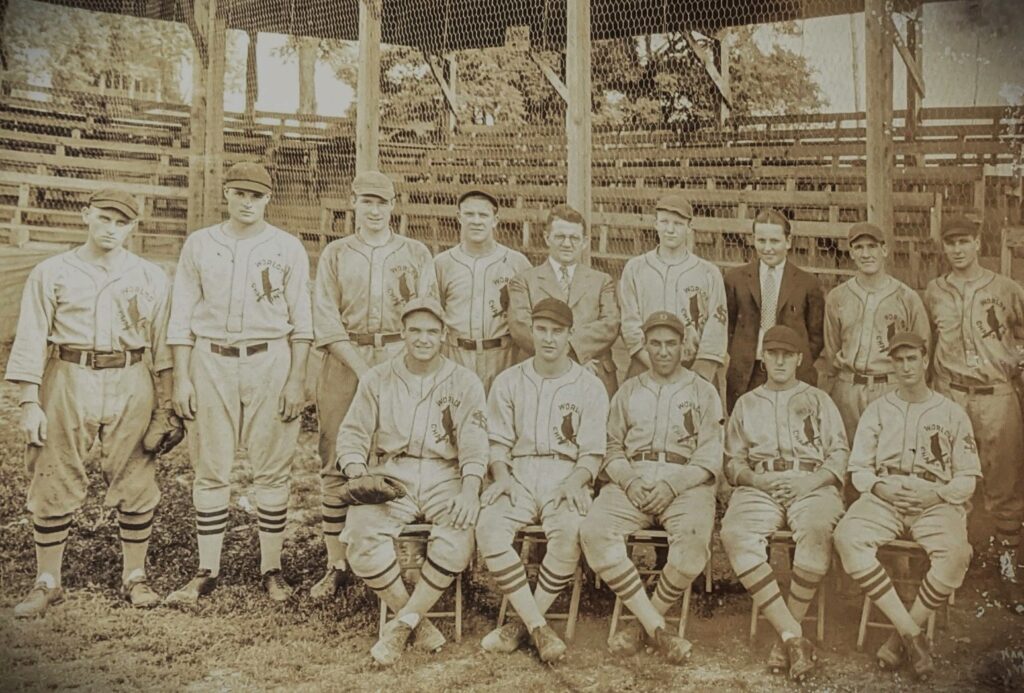As Major League Baseball celebrates the 2024 All-Star Game, a look back at local sports history brings to mind memorable leagues that helped define the national pastime. In 1915, a baseball organization called the Blue Ridge League was founded in Hagerstown. Six local teams competed, with talented players giving baseball fans across the tri-state area a glimpse of future stars. One hundred years ago, the 1924 Martinsburg Blue Sox won their third consecutive championship and took home the trophy.
Charles Boyer founded the Blue Ridge League (BRL) and later Hagerstown businessman James Jamison Jr. became the respected league president. The first towns represented in the BRL were Chambersburg, Hanover, Gettysburg, Hagerstown, Frederick and Martinsburg. The league evolved during its 15-year run, creating everlasting baseball memories until it disbanded in 1930.
A wealth of talented baseball players emerged, creating spirited competition with fierce rivalries between league teams. Baseball fans in Pennsylvania, Maryland and West Virginia enjoyed watching these players play at BRL games, even though they were at the bottom rung of the ladder to the major leagues (Class D).
Most of the BRL players have been forgotten. But a few legendary players are still remembered today. In total, over 100 future major leaguers played for these local teams, and three BRL legends were later inducted into the Baseball Hall of Fame in Cooperstown, New York, the highest honor in sports.
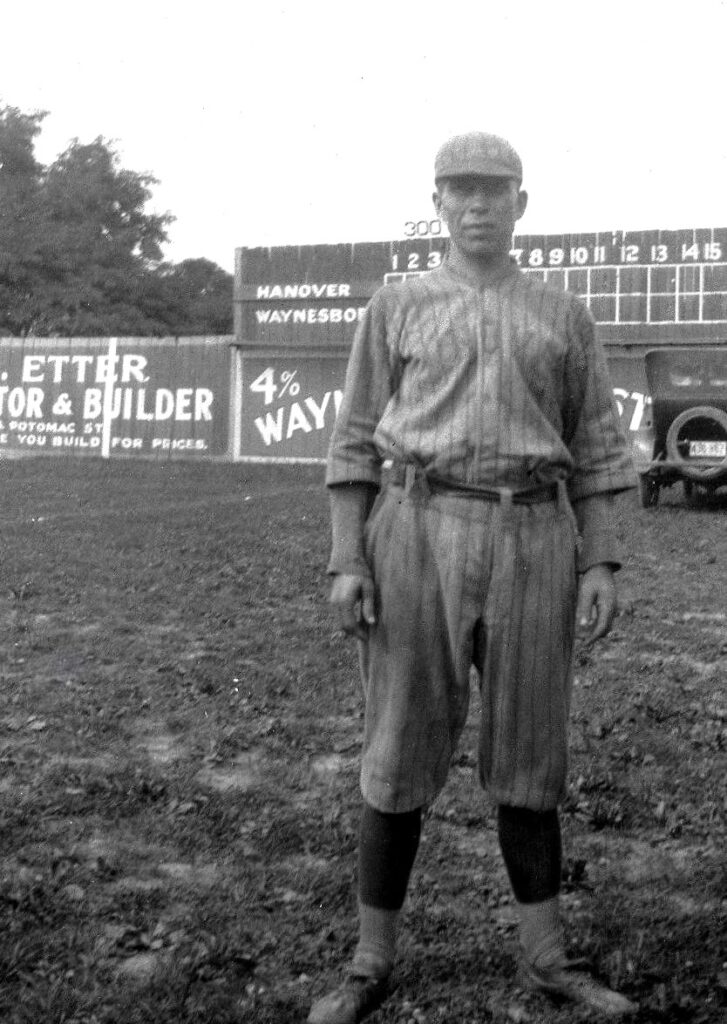 The Blue Ridge League existed from 1915 to 1930.
The Blue Ridge League existed from 1915 to 1930.
BRL baseball began in 1915 with the Frederick Hustlers winning their first championship. In 1916 the Chambersburg Maroons won, and in 1917 the Hagerstown Terriers won. This was the first of five championships for Hagerstown, the most in Blue Ridge League history. The Hagerstown franchise was also known by three other names, but eventually settled on the “Habs” after trying nicknames such as the “Blues” and “Champs.” Other BRL teams frequently changed names.
Two dramatic events converged to bring about the Blue Ridge League’s demise in 1918. Games were canceled that summer as many baseball players served their country overseas in World War I. The devastating effects of illness and death from the worldwide influenza pandemic continued into 1919, causing the cancellation of the entire Blue Ridge League season. However, in 1920 the Blue Ridge League reorganized and the Waynesboro Villagers entered as a new franchise, completing the league with six teams.
As the Roaring Twenties began, the Martinsburg Blue Sox (originally called the Champs) were poised to begin a BRL dynasty. In 1921, Louis “Hack” Wilson, a native of Elmwood City, Pennsylvania, joined the team’s roster. Hack Wilson was only 5’6″ tall, but he was a dynamic man with a thick neck, a big head and a powerful build weighing 195 pounds. One sportswriter described him as “built like a beer barrel and he knew what was inside it.” Wilson was a hard-charging, combative character on and off the field. In 1922, he set the BRL single-season home run record with 30 home runs in just 84 games. Wilson would later achieve even greater feats on a bigger stage.
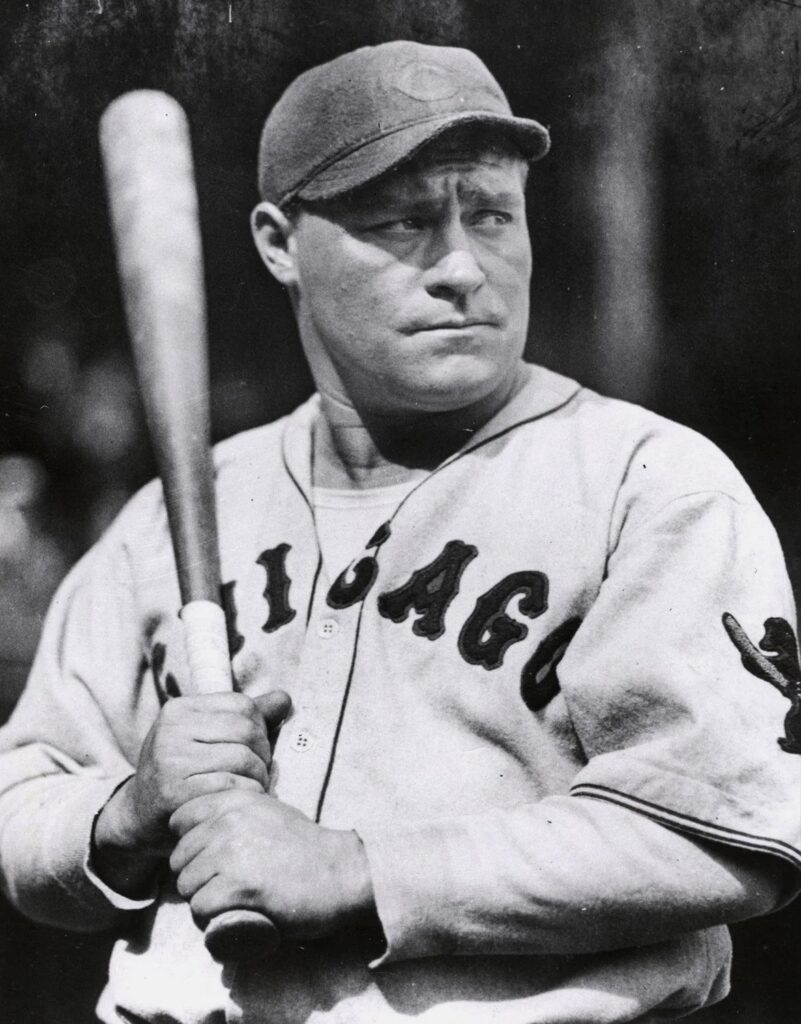 Former Martinsburg BRL player Hack Wilson set a major league RBI record that still stands today.
Former Martinsburg BRL player Hack Wilson set a major league RBI record that still stands today.
The Blue Sox also had players like Reggie Rawlings, a perennial hitter who played in the BRL for 13 seasons. Robert Moses “Lefty” Grove started as a pitcher with Martinsburg in 1920. His talent was quickly recognized and the Baltimore Orioles, then an Eastern League team, bought out his BRL contract. Grove quickly rose to the major league level and became a legendary star.
At Rosemont Park in Martinsburg, Blue Sox fans were passionate about their team. Home games were raucous, with fans cheering in the stands, but rowdy and threatening behavior by supporters was common.
The Chambersburg Maroons had a bitter rivalry with Martinsburg that warned the neighboring Waynesboro team of the potential dangers of Blue Sox fans, and in the summer of 1922, the second-place Waynesboro Villagers thrilled Pennsylvania fans with a trip to West Virginia for two crucial games against the league’s best team.
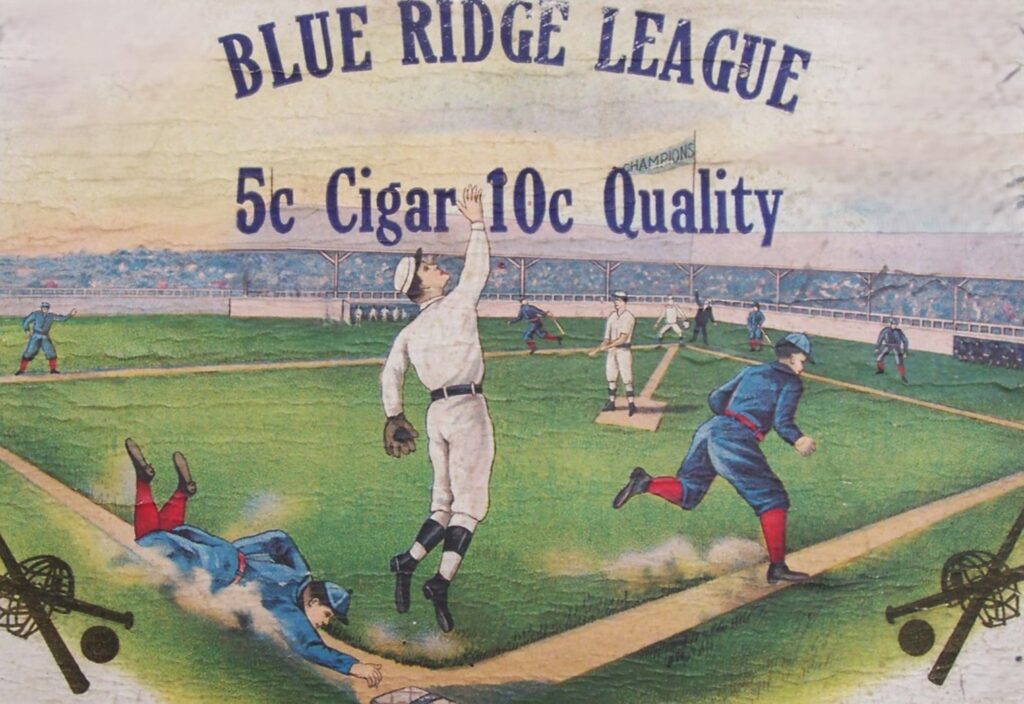 Vintage cigar box advertising the Blue Ridge League
Vintage cigar box advertising the Blue Ridge League
During the game, Martinsburg fans stormed onto the field multiple times after calls went against the Blue Sox. A bottle was thrown at the Waynesboro third baseman, which grazed his head. The Martinsburg third base coach turned to the home crowd and yelled, “If you’re going to throw it, don’t miss it.” Other Waynesboro players were pelted with rocks and bricks. Another was hit with a potato. The umpire was surrounded by the crowd and verbally abused. The local police were unable to control the unruly crowd, and Martinsburg’s star players Wilson and Rawlings came to the aid of the Waynesboro players. Martinsburg won the first game, 7–6, but lost the second game, 4–2, to visiting Village. The Waynesboro fans quickly retreated north after the victory, but were showered with shrapnel by Martinsburg hooligans as they fled.
The Blue Ridge League had many unique players, many of whom were given nicknames. Famous players were called “Bugs,” “Chick,” “Shorty” and “Snook.” Five no-hitters were pitched in the league, and two pitchers recorded 25 wins in a season schedule much shorter than the major leagues.
The Blue Sox played great baseball in the early 1920s. The Blue Ridge League was competitive (Waynesboro finished just a game and a half behind after a tough 1922 season), but the Martinsburg team combined good offense with good pitching. They won their first league championship in 1922 and continued to win in 1923.
As the 1924 season progressed, the Hagerstown Habs were determined to dethrone the Blue Sox. For most of the season, Hagerstown led the league standings with three hitters batting .345 or better. But Martinsburg refused to let their two-year title bid go without a fight.
The Waynesboro Villagers hosted the Blue Sox in July and got revenge after a hard-fought game in the WV game of ’22. Though Waynesboro finished last that year, the local paper celebrated the victory, reporting that the Villagers “beat the two-time Martinsburg champions, 12-4, at EB Park in the borough.” The second game of the doubleheader ended in a 4-4 tie due to darkness.
But the Blue Sox did well in ’24. Reggie Loring led the league with a .379 batting average and hit 21 home runs. Martinsburg finished the season 59-38, a few percentage points better than Hagerstown, who finished 1-1. With no playoff system in place yet, the Blue Sox struggled all season. It was the closest season in BRL history. The Hagerstown Habs would avenge these heartbreaking losses the next two seasons, winning the league pennant in 1925 and 1926.
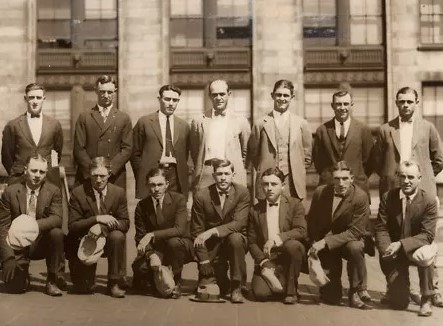 In 1924, Martinsburg won its third consecutive BRL championship.
In 1924, Martinsburg won its third consecutive BRL championship.
In an effort to increase revenue and interest, the BRL changed its season format to a split season in 1926. Under this new system, the champions of the first half would play the champions of the second half in a year-end championship series.
In the late 1920s, three Pennsylvania teams ran into financial difficulties and received bailouts from major league sponsors: Waynesboro’s new St. Louis farm team, with its ties to the far-flung city, changed its local name from the Villagers to the Cardinals (1925) and then to the Red Birds from 1928 to 1930. Chambersburg was affiliated with the New York Yankees, Martinsburg with the Philadelphia Athletics, and Hagerstown with the Washington Senators.
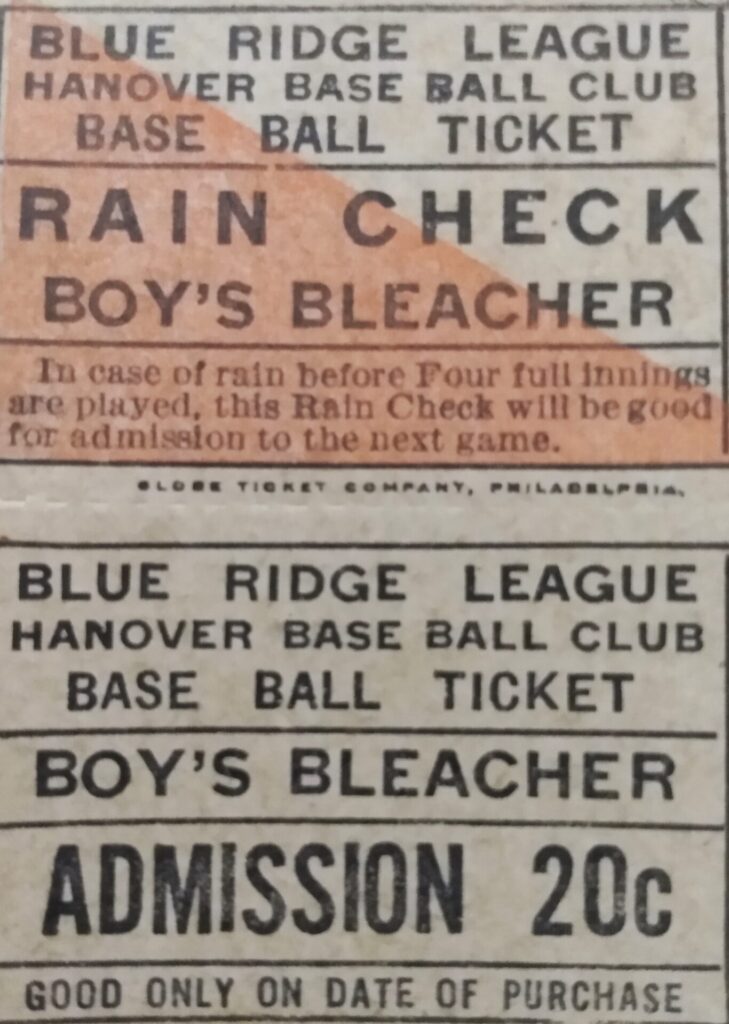 Men’s stand tickets for the Hannover match
Men’s stand tickets for the Hannover match
On October 24, 1929, the stock market crashed. With the looming Great Depression upon us, the Blue Ridge League went bankrupt and disbanded after the 1930 season. However, that same year, former Martinsburg player Hack Wilson played for the major league Chicago club and had legendary batting performances. Wilson hit 56 home runs, a National League record that stood for 68 years. Hack also had an astounding 191 RBIs, a major league record that still stands 96 years later.
However, Wilson’s talent for hard life cut his baseball career short. After a series of financial difficulties after retirement, Hack Wilson died at age 48 from a fall at his Baltimore home. National League President Ford Frick donated funds to cover funeral expenses. Wilson was buried in Rosedale Cemetery in Martinsburg, his new baseball town, where a beautiful granite monument marks his resting place. Wilson was inducted into the Baseball Hall of Fame in 1979.
BRL native Lefty Grove had a longer career in the major leagues, winning 300 games over 17 seasons with the Philadelphia Athletics and Boston Red Sox. He set the league record for earned run average nine times and once led a pitcher to 16 consecutive wins. Considered one of the best pitchers of the 1930s, Grove was inducted into the Baseball Hall of Fame in 1947.
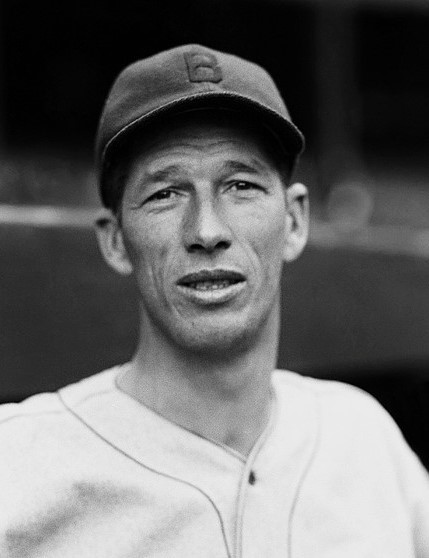 Lefty Grove graduated from the Blue Ridge League and was inducted into the Baseball Hall of Fame.
Lefty Grove graduated from the Blue Ridge League and was inducted into the Baseball Hall of Fame.
The third of BRL’s baseball kings is Bill McGowan, who was an umpire, not a player. McGowan’s respect for umpiring began in the BRL in 1917 and culminated in a 30-year career in Major League Baseball that earned McGowan a trip to Cooperstown in 1992. The great Ted Williams considers McGowan the best umpire he ever saw.
Waynesboro is also famous for Billy Myers, who played for the Cincinnati Reds and later became a Reds Hall of Famer. Johnny Keane started as a shortstop for the Waynesboro BRL and eventually became a major league manager. In a memorable managerial transition, Keane led the St. Louis Cardinals to a World Series victory in 1964. But then he abruptly resigned to become manager of the ’65 Yankees.
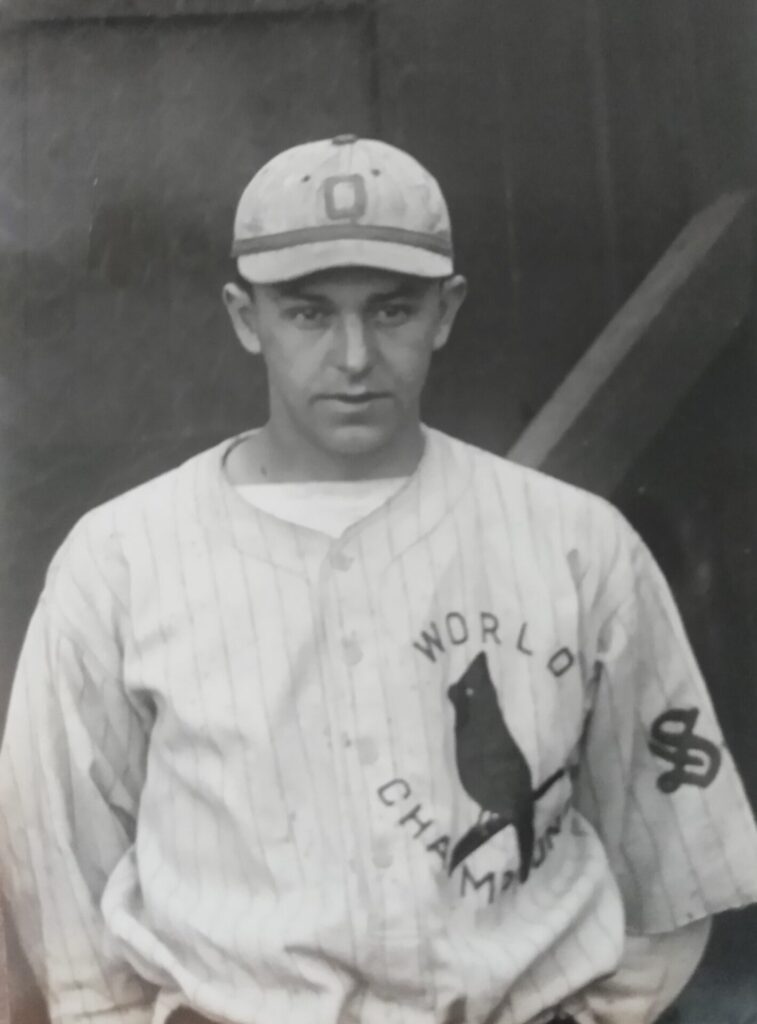 Billy Myers played for Waynesboro early in his career and later became a Cincinnati Reds Hall of Famer.
Billy Myers played for Waynesboro early in his career and later became a Cincinnati Reds Hall of Famer.
Keene’s former Waynesboro team never won a BRL title, but one season they showed their farm team pride by wearing the St. Louis Cardinals’ World Series-winning uniforms.
Some Blue Ridge players went on to have successful careers outside of baseball. Burton Shipley was a player and manager at Waynesboro and Martinsburg, and later became famous as the basketball coach at the University of Maryland. Alan “Lefty” Clark also played for those same two BRL teams and was an excellent pitcher. Clark won a record-tying 25 games at Waynesboro and also threw a no-hitter against his former Martinsburg team. Clark went on to become a prominent thoroughbred trainer in his native Maryland.
Looking back a century, Blue Ridge League teams had a major impact on local towns, serving as a source of community pride and bringing sports entertainment and commerce to the tri-state area. Some BRL players later returned to the Cumberland Valley, drawn not only by baseball but also by the local communities that embraced them.
(Thanks to Patrick Helfrich for images, artwork and research assistance)


